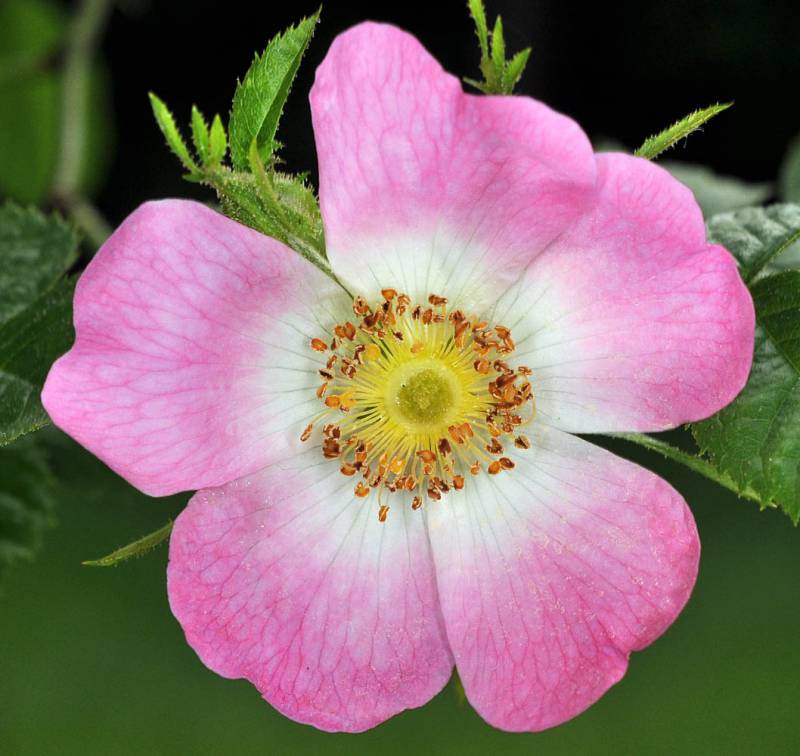Rosa rubiginosa
sweetbrier rose, small-flowered sweetbrier
Leaves alternate, deciduous, odd-pinnate with 5-7 firm leaflets;
leaflets broadly elliptic to sub-orbicular, 1-2.5 cm. long, doubly serrate with gland-tipped teeth, the lower surface with stalked glands and hairs.
Flowers in small clusters or solitary, on short, stout, glandular-bristly pedicels;
sepals 5,1-2 cm. long, with stalked glands and some slender lateral lobes, spreading, deciduous at maturity;
petals 5, 1.5-2 cm. long, bright pink;
stamens numerous;
pistils many, the styles densely short-hairy.
Hips sub-globose or ovoid, 1-1.5 cm. long, glabrous, bright red.
Rosa rubiginosa
Occurring on both sides of the Cascades crest in Washington, though more common west of the crest; southern British Columbia to California, east to Idaho, Montana, Wyoming, and Colorado, further east from the Great Plains to the Atlantic Coast.
- Local floras:
CA,
OR,
WA
- Local Web sites:
CalFlora,
CalPhotos,
Flora NW,
PNW Herbaria
WildflowerSearch
iNaturalist (observations)
USDA Plants Database
- LBJ Wildflower Center
- SEINet
- Plants of the World Online
- Encyclopedia of Life
- Wikipedia
- Google Image Search


